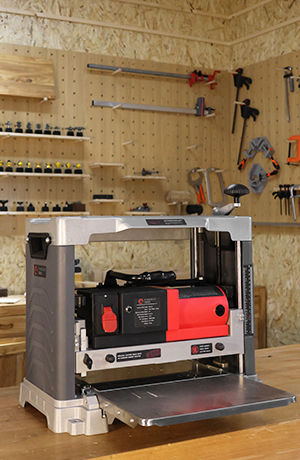Router bits play a vital role in molding and shaping in woodworking. Whether it's a complex joinery structure, a fancy shape, or trimming the edges of a material, the right choice of router bit can efficiently accomplish your project.
However, there are many different types of router bits, each with various functions and materials. So, you need to consider different aspects to make the process smoother. If you are a beginner and considering investing in some router bits, read this blog. We explore the main factors you should know.
Must-Have Router Bits
Before learning about the considerations when choosing a router bit, know some basic bits that you must have. The following router bits are used regularly by most woodworkers.
- Straight router bit: It’s the most versatile and common router bit in woodworking tasks. It can cut large-sized materials. You can also choose the right size for making slots.
- Chamfer router bit: It creates an angle or a bevel along the edge of the workpiece.
- Round-over router bit: It is used to create smooth, rounded corners on the edges of tables and door frames, enhancing the overall styling of the workpiece.
- Rabbeting router bit: It makes rabbets in woodworking pieces for jointing.
- Flush trim router bit: It is used to trim the edges of the workpiece to make it smooth and flush with a template.
Related Article: Spiral Router Bit vs Straight Router Bit: Which One is Better
How to Choose Router Bits
You might think about which one you should buy as your first router bit to use with the router. Choosing the right router bits can be confusing because there is a wide range of bits. You need to consider several factors when selecting the right bit for your router.
Router Bit Shanks
A router bit has three main parts: a shank, a body, and a cutting edge. The router bit shank is a solid cylinder. It is used to hold the router bit by inserting it into the collet of your router.
The shank comes in two sizes, 1/2 inch and 1/4 inch, the smaller size for lighter tasks and the larger size for tougher tasks. Make sure the router bit shank is compatible with your router collet before buying a bit. The 1/2 inch shank is more recommended because it's more robust and less likely to break.
Router Bit Materials
Router bits are generally made of two materials: high-speed steel (HSS) and carbide. HSS bits are typically used for softwoods and plastics, while carbide bits are suitable for hardwoods and man-made lumber.
HSS router bits are low-cost and have high heat resistance. However, they are not as hard or durable as carbide router bits. Although the carbide router bit is more expensive than the HSS router bit, it stays sharp longer, which means it has a longer lifespan.
Overall, the HSS router bit is the preferred choice if you are on a budget, but the carbide router bit can help you save money in the long run.
Cutting Edge Profiles
The different shapes of the router bit are designed to enrich the diversity of the edge profiles. You can choose the type of router bit according to the usage situation and task requirements.
For example, when you want to trim the edges of the board, select the flush trim router bit. If you need to make a beautiful raised panel, try the raised panel router bits with various styles. Or, you want to make some fancy shapes on the edges, choose the specialty bits for specific purposes.
Wood Types
Router bits can be applied to wood, plastic, and metal. For carpentry, dealing with different types of wood will affect our choice of router bit. The density and hardness of the wood need to be taken into account when choosing a router bit, as this will affect the efficiency of the bit.
When processing softer woods, a router bit with a lower hardness (HSS) is preferred. Harder woods require a router bit with higher hardness and durability (carbide).
Best Router Bits for Beginners
The choice of the router bits for your task should depend on the type of edge profiles and the material you are working with. Consider the size and shape of the bit. By the way, pick the best router bits based on your budget.
If you are a woodworking beginner, there’s no need to buy too many types of bits. The most important thing is to learn how to use a router bit to create basic cuts or edge profiles. After mastering the skills, you can then acquire specialty router bits to accomplish more complex cuts.
FindBuyTool offers a router bit set with four basic router bits that can meet most of your needs. They are made of carbide and have industrial-grade quality at affordable prices. All of the bits are in 1/2 inch shank size. They can cut smooth and clean results without chips and burrs.
Do you have any questions or concerns about this blog? If yes, please leave a comment along with your email address below, and we will provide you with feedback as soon as possible. Furthermore, we would greatly appreciate it if you shared this post on your social media.
Also Read: 7 Common Router Bit Mistakes and How to Avoid Them
FAQ About How to Choose Router Bits
#1. What are the must-have router bits?
The must-have router bits include straight, chamfer, round-over, rabbeting, and flush trim router bits. They have distinct purposes and are indispensable for your woodworking projects.
#2. Can I use a 1/4 router bit in a 1/2 inch router?
Yes, you can use a 1/4-inch router bit in a 1/2-inch router, as long as the router has a collet that is compatible with a 1/4-inch router bit.



